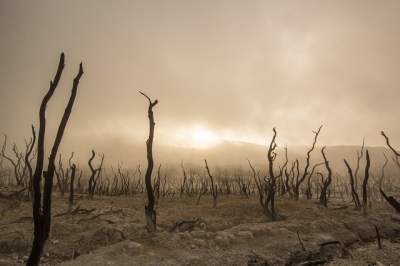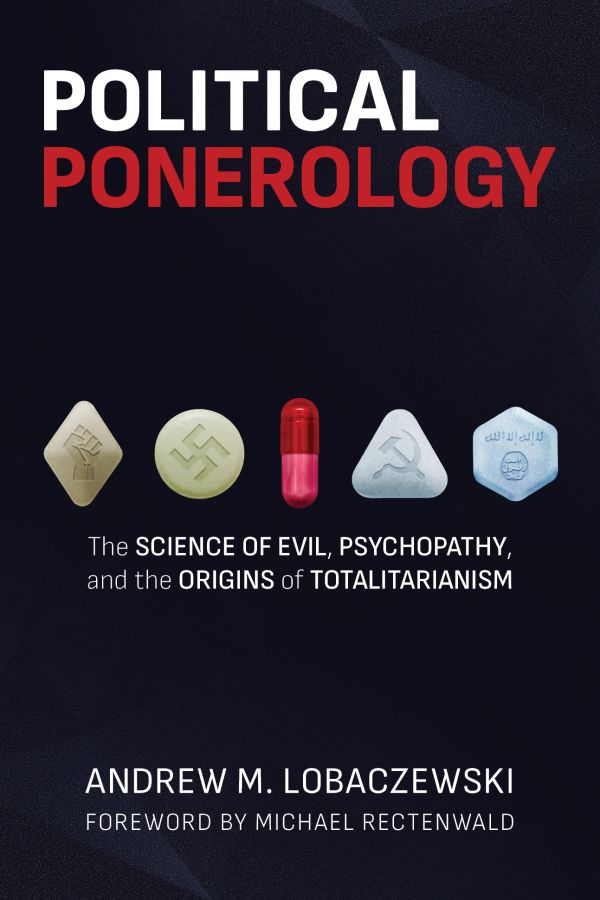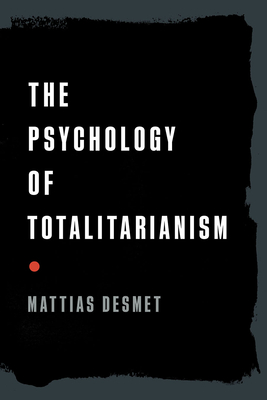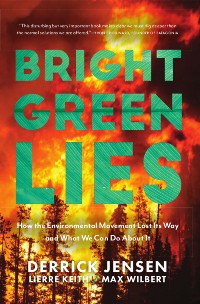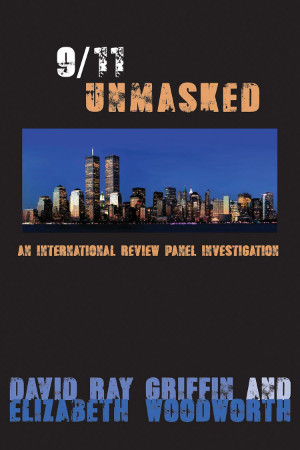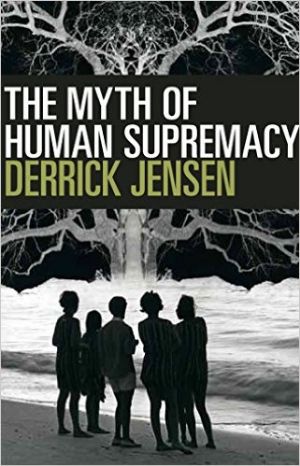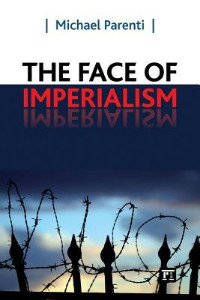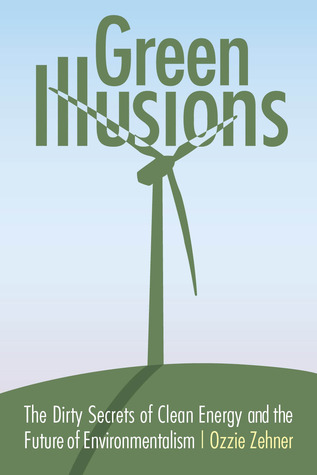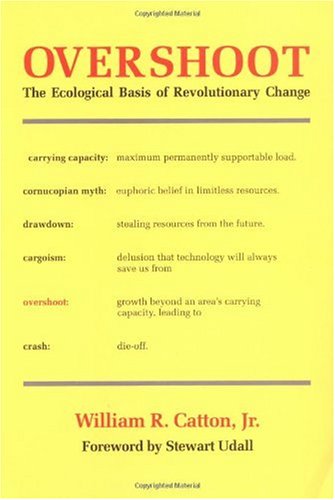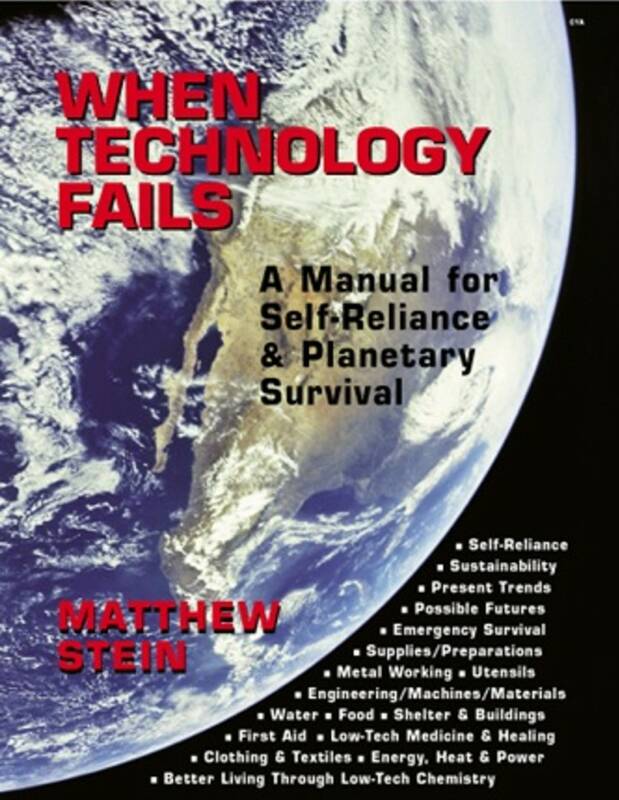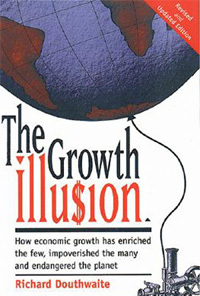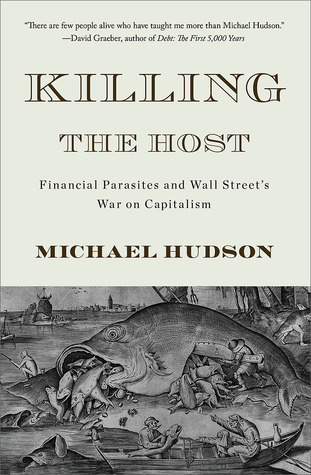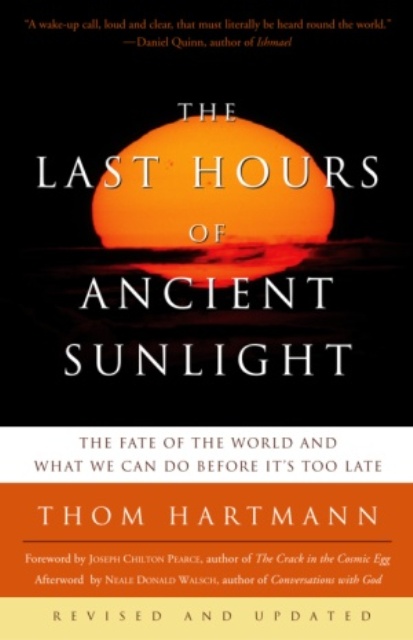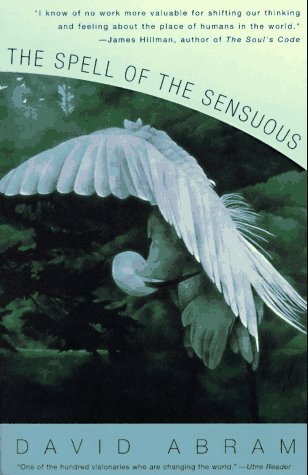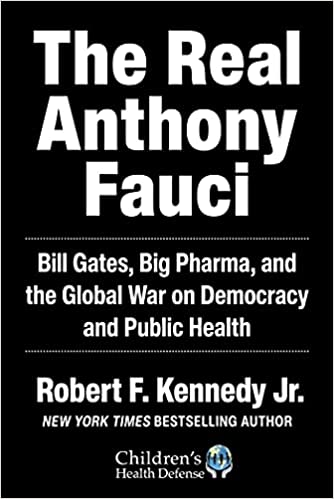For years, I worked as a war reporter, covering the on-the-ground realities of America’s “nation building” exercises halfway around the world. While stationed in Iraq, I covered the US military’s assault on Fallujah, struggling to file stories that matched the severity of the violence I was witnessing. The bloodshed was so pervasive, and escalating so rapidly, that the moment my stories were published, they were, almost without fail, already out of date.
I never thought I’d feel the same sensation of events outpacing our ability to comprehend them back home, outside of a war zone. But when I set about writing a book about the global climate crisis, with things unraveling as rapidly as they are, I could barely keep up with the latest study, the latest report, the latest cynical disavowal of responsibility from our government. The climate crisis we face today is simply moving too fast for us to effectively document, let alone fully comprehend.
Nevertheless, I didn’t know how accurate I had it in my book—The End of Ice, which came out in January of this year—by simply writing about what was right in front of me; whether it was the perishing of the Great Barrier Reef, the drying out of the Amazon, or how rapidly the permafrost was already thawing, it was evident where all this was going.
And now the intensities of it all feel as though they are overwhelming every part of our lives, and all of us are struggling to carry forward into an increasingly fragmenting, flooding, burning world. Will the town where you live become the next Paradise, California, completely engulfed in flames? Or if you are on the coast, when will the real estate bubble that determines the value of your home become drowned out of existence? How do we live with the knowledge that the world is collapsing around us, amid a dominant culture intent on pretending everything is fine?
It was additionally challenging having written a book that dove so deeply into a topic that so many people don’t even want to talk about. A significant segment of those discussing the climate crisis, people who are committed to tackling the crisis, believe those of us who know the grim facts should not share them so publicly, so as not to scare people. Yet we must have a clear map of the reality that is upon us if we are going to make the challenging decisions and choices that these times demand of us.
The fact is that we are looking at nonlinear changes that aren’t based on a simple proportional relationship between cause and effect; the changes we now face are by nature abrupt, unexpected, and challenging to predict.
I used to work as a mountain guide on Denali in Alaska. If I had a team of people I was responsible for camping at high camp at 17,200 feet on the mountain, and I received a radio call from the National Weather Service warning me that the fiercest storm imaginable had suddenly brewed up and was approaching so rapidly we would not have time to descend, would I not tell my clients? Of course I would tell them, because the alarm the information would trigger would be necessary for the energy we would need to put into preparations physically, psychologically, and spiritually as we prepared our camp for the worst, while we got busy reinforcing snow walls, tents, and checking out all our supplies, in preparation for the maelstrom.
Just one week after The End of Ice was released, a team of glaciologists from the University of California–Irvine and Utrecht University showed that over the course of four decades, the “total mass loss” of ice from Antarctica had accelerated at a pace six times faster than it had during the 1980s. By July, scientists were trying to determine if glacial melting there would become irreversible. Later in the year, researchers in Greenland told the BBC they were “astounded” by the rate of acceleration in the melting and expressed fear for coastal cities in the future. One of the scientists said, “So, we’re losing Greenland–it’s really a question of how fast,” and said Greenland is already facing a melting “death sentence.” The loss of the Greenland Ice Sheet alone will raise global sea levels 20 feet.
Another study warned that if current warming trends continue—and there is of course no reason to think they will do anything other than accelerate—the mighty Himalayas could lose most of their glaciers by 2100 as they warm up by eight degrees Fahrenheit. This will bring radical disruptions to food and water supplies for upwards of 1.5 billion people, in addition to a refugee crisis of staggering proportions.
As winter gave way to spring across the Northern Hemisphere, it emerged that 2018 was the fourth-warmest year ever recorded, with the only warmer years being 2015, 2016, and 2017. This year is on track to become the next-fourth-warmest year on record—that is another way of saying that the last five years are the hottest five years since record keeping began. At the same time the United Kingdom’s Met Office announced we are living in the middle of what will likely become the warmest decade ever recorded.
The global food supply is already under severe threat from an ongoing and catastrophic loss of biodiversity. “Around the world, the library of life that has evolved over billions of years—our biodiversity—is being destroyed, poisoned, polluted, invaded, fragmented, plundered, drained, and burned at a rate not seen in human history,” Ireland’s president, Michael Higgins, said at a biodiversity conference in Dublin. “If we were coal miners, we’d be up to our waists in dead canaries.”
Climate-disruption-fueled extreme weather patterns are also adding to the risk of a global food crisis, as research revealed how multiple “breadbaskets” could fail at the same time.
An analysis published in the scientific journal Biological Conservation reports that plummeting insect numbers globally could lead to the collapse of nature. “Our work reveals dramatic rates of decline that may lead to the extinction of 40 percent of the world’s insect species over the next few decades,” reads the abstract of the study. It warns that insects could vanish within a century, and the researchers remind us that insects are “essential for the proper functioning of all ecosystems,” and that “the current trends are disrupting—to varying degree—the invaluable pollination, natural pest control, food resources, nutrient recycling and decomposition services that many insects provide.”
To put it simply, when the insects are gone, so will be humans, and right now we are on a trajectory to lose most of the insects on Earth within 100 years.
The Amazon rain forest burned at a record pace, seeing an 80 percent increase in wildfires compared to the same period the previous year. Smoke from the burning forest darkened the sky over Sao Paulo, more than 1,700 miles from the fires, which were so large their smoke also covered parts of Bolivia, Peru, and Paraguay.
Dr. Lovejoy, whom I spent extensive time with in the Amazon, warned in an editorial in the journal Science Advances: “We believe that negative synergies between deforestation, climate change, and widespread use of fire indicate a tipping point for the Amazon system to flip to non-forest ecosystems in eastern, southern and central Amazonia at 20-25% deforestation.” The World Wildlife Fund, which Lovejoy used to head, estimates that 17 percent of the Amazon has been lost in the last five decades. The fires of 2019 have brought us that much closer to the tipping point Lovejoy has warned of. In fact, we could have already passed that tipping point.
Things went from bad to worse for the Great Barrier Reef. Not only is the reef subjected to ongoing bleaching events happening at a pace far beyond the natural rate at which they occur, but climate-crisis-fueled rain events caused the reef to experience “smothering” of its coral when floodwaters drained onto it, bringing soil runoff with them. Some scientists referred to this as the “nail in the coffin” for the existence of the largest coral reef on earth, which then received another nail from the Australian government shortly after that when it decided to give the green light to dumping one million tons of sludge across the reef. Less than six weeks after that, a study was published showing that the reef had suffered an 89 percent collapse in new coral after its bleaching events of 2016 and 2017. This means that as the reef dies, it is unable to come back to life as the waters in which it live continues to warm, sediment-filled rainfall runoff covers it, and assaults from the Australian government continue.
Meanwhile, in December a study showed how the planet’s oceans are rapidly de-oxygenating, with some areas in the tropics having already lost 40 to 50 percent of their oxygen. To make matters worse, a landmark report showed that no matter how much emissions are cut, extreme sea-level events that used to occur once per century will happen every single year by 2050. A previous study had already warned that unless dramatic emission cuts were made and coastal defenses against sea-level rise dramatically strengthened, coastal lands that currently house 300 million people will flood at least once every year by 2050. An Oxfam report published this December showed that, already, one person every two seconds is being forced from their homes due to the climate crisis.
My concerns about what was happening in the Arctic regarding the increasing release of methane were proven out, as earlier spring rains there have been thawing the permafrost at an accelerated rate, hence releasing more methane than ever. In fact, permafrost across the Canadian Arctic is now thawing out 70 years faster than had been earlier estimated, according to Dr. Vladimir Romanovsky.
Another historic event occurred in 2019, this one in the form of the country of Iceland’s holding a funeral for the first glacier the country lost to the climate crisis. A plaque left on the location of the vanished glacier offers “A letter to the future” with the message: “This monument is to acknowledge that we know what is happening and what needs to be done. Only you know if we did it.”
Humans are now injecting carbon dioxide into the atmosphere at a rate nine to 10 times higher than that during the Paleocene-Eocene Thermal Maximum (PETM) global warming event 56 million years ago, which acidified the oceans and drove large numbers of marine species to extinction.
“The fact that we could reach warming equivalent to the PETM very quickly, within the next few hundred years, is terrifying,” Larisa DeSantis, a paleontologist with Vanderbilt University said of the study; while geophysicist Gabriel Browne, with the University of Utah, observed, “We don’t have much in the way of geologic examples to draw from in understanding how the world responds to that kind of perturbation.”
Three months after that study was published, for the first time in human history Earth’s atmospheric concentration of CO2 reached 415 ppm.
Less than two weeks after that, the International Energy Agency announced that global carbon emissions set a record in 2018, increasing nearly 2 percent over the previous year to set a record of 33.1 billion tons. By November, the UN’s World Meteorological Organization reported that the concentration of climate-heating greenhouse gases had hit another all-time high, and announced there was “no sign of a slowdown, let alone a decline.”
The Trump administration began the formal withdrawal of the United States from the Paris climate agreement, and New York State’s claim that ExxonMobil had misled investors for years about the risks of climate disruption was rejected in court.
All of this, in just 2019 alone, and this is far from a complete catalog of the unraveling of the biosphere.
In the Age of Loss in which we now live, we are feeling the passing away of species and life-giving systems of Earth, whether we are cognizant of it or not. Existential grief is now etched in our bones. Slowly, we are coming to terms with the magnitude of what is inevitable, living while seeking meaning against a backdrop of constant endings: the loss of glaciers, the loss of species, the loss of rain forests, the loss of coastlines as we’ve always known them, the loss of cities, the loss of any solid conceptual ground to stand upon as this climate-disrupted world becomes increasingly dystopic with each passing day.
Yet that is a privileged position to find oneself in.
Native Americans have known from the beginning moments of first contact that a capitalist system hell-bent on eternal growth and in stark denial of endings and death would inevitably end in collapse, and take down much of the rest of the planet with it. For this dominant culture of consumption is constructed to disallow anything like a soft, quiet death, let alone a relinquishing of control.
Like someone on their death bed refusing to accept that it is time for them to leave the world, rather than make gentle, dignified exit, the rapacious system is hoarding all the medicine, IV bags, and doctors that it can to wrest a few more days from the world, other patients be damned.
If 2019 was the year many of us realized the climate crisis was quickly exceeding our worst projections, it was also a year of principled defiance: It was the year Greta Thunberg excoriated global leaders at the UN climate summit for their inaction; it was the year of the global climate strikes, with students in 150 countries demanding action; it was the year Extinction Rebellion escalated its militant actions across the UK. When we fight for climate justice, for swift, system-changing action against climate change, we do not fight alone.
“Hope is not the conviction that something will turn out well,” Czech dissident, writer, and statesman Václav Havel said, “but the certainty that something is worth doing no matter how it turns out.”
As we leave the warmest decade on record behind, we are inevitably facing the beginning of what will again be the warmest decade ever, and there is nothing to indicate a slowing of the demise. We are trapped at high camp, and the storm is raging around us. By the end of 2019, climate scientists had already warned that the world may have already passed several critical climate tipping points, warning of an “existential threat to civilization” as climate impacts lead to a cascade of unstoppable events.
May we find ways to work together, care for one another, care for the other species that are still here, and work to protect what remains.
After all, are we not graced with the moral imperative to do the right thing, no matter how dire the situation?
Article re0posted with permission from the author.
Author
Dahr Jamail is a recipient of numerous honors, including the Martha Gellhorn Award for Journalism for his work in Iraq and the Izzy Award for Outstanding Achievement in Independent Media in 2018. Jamail’s work has been published in The Guardian, The Independent, Al Jazeera, Le Monde Diplomatique, and Foreign Policy in Focus, among others. He’s been a frequent guest on BBC, Democracy Now!, and NPR. His newest book, The End of Ice (The New Press), has just been published. He is also the author of Beyond the Green Zone and The Will to Resist. He is a staff reporter for Truthout.
![]() Don't forget to feed the birds. Donate here
Don't forget to feed the birds. Donate here

